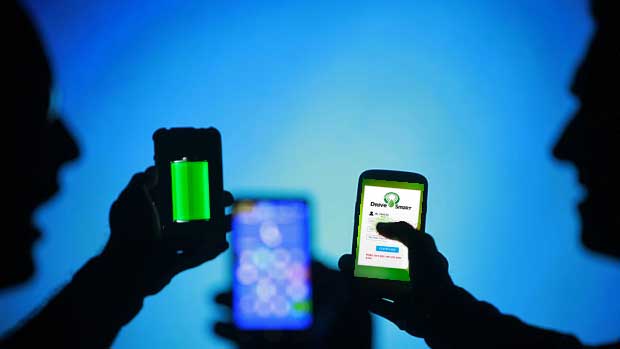
No hay comentarios todavía
As the Technical Manager of :DriveSmart I have been asked the same question countless times: How much battery does the DriveSmart app use?
:DriveSmart uses your battery in two types of circumstances. The first one is when you access the app and use it to see data, journeys and other options. In this case, your consumption is average since you are using data (to receive information from :DriveSmart‘s cloud) and the screen to display the data. Using apps that you have in your smartphone.
The second one is when a trip is recorded. In this case your phone uses data (to send information to :DriveSmart ‘s cloud), your GPS and also other sensors of your phone to collect the necessary information to evaluate your driving. When :DriveSmart asks you to enable your Bluetooth is to be able to offer the convenience of starting the app automatically. The app does not use it at any time, it simply detects the change in connection of your hands-free set and launches the app.
Consumption is minimal and it does not affect the autonomy of your battery. We have done a series of tests with over 20 different types of Smartphone in which we drove for over 10 hours using the app. The highest consumption that was registered was of 21%. Therefore, under normal usage, Drive Smart should use less than 5% of your battery.
If we take into account that the GPS, mobile data, and other similar characteristics are what make Smart our Smartphone; it doesn’t make much sense to disable them when they are the ones providing greater value. That said; let’s look at the different technologies and their relationship with the battery.
Bluetooth is a wireless communication technology. The fact is that wireless communication is done by radio (yes, the same radio we all know but with some nuances). The principles are as they have always been: the farther you want to transmit or receive the more powerful must be the transmitter and accurate the receiver.
Your 3G o 4G usually transmit from between 200 meters to several tens of kilometers, which will depend on your network coverage in the area. Transmitting on these magnitudes may require up to 1.4 watts. In the case of Wi-Fi, the distances shorten between 10 to 150 meters. The power usage of transmitting is reduced but the consumption isn’t since the transmission speed usage is of around 1.6 watts or less (depending on the manufacturer).
Last but not least, the Bluetooth has a much lower range, of between 1 to 20 meters, so its radiation power is also lower. It requires 65 MW for communications and less than 12MW when idle.
The GPS is solely and exclusively a receiver. Therefore, it doesn’t need to send signals, which is the function that consumes more energy. In itself, the GPS is a passive item. Unless the manufacturer of your Smartphone is using an active antenna, the consumption, when receiving information from the network of satellites (GPS), is minimum. What does use a little more power is processing the signals and the calculations done by the GPS chipset to determine the 3D location. At the end we can say that the battery consumption of your GPS is about less than 1%.
If to this we provide it with AGPS type aids, downloading and synchronizing calendars or getting locations via Wi-Fi and 3G networks, we will be reducing its workload. Our GPS consumes more when it has no idea where it is; to avoid this, enable the aid to provide the location via Wi-Fi and network. It will reduce the time locating the position thus easing the effort of the GPS.
In conclusion, your battery, which is the resource that wears out the most with the daily use of your mobile phone, requires that you pay attention of how you use it. Don’t let yourself be fooled by false myths; everything running on your Smartphone consumes battery.
However, the reality is that 90% of consumption comes from the screen, the backlight and communications, especially from mobile networks and Wi-Fi. To take full advantage of it, enable Wi-Fi only where you have access to it, use data carefully and you will get the most out of your battery. Remember also, that proper maintenance will prolong its life. But we’ll explain that in another post …
Why not try yourself everything we’ve told you? Download :DriveSmart for free and you will take full advantage of positive driving 😉